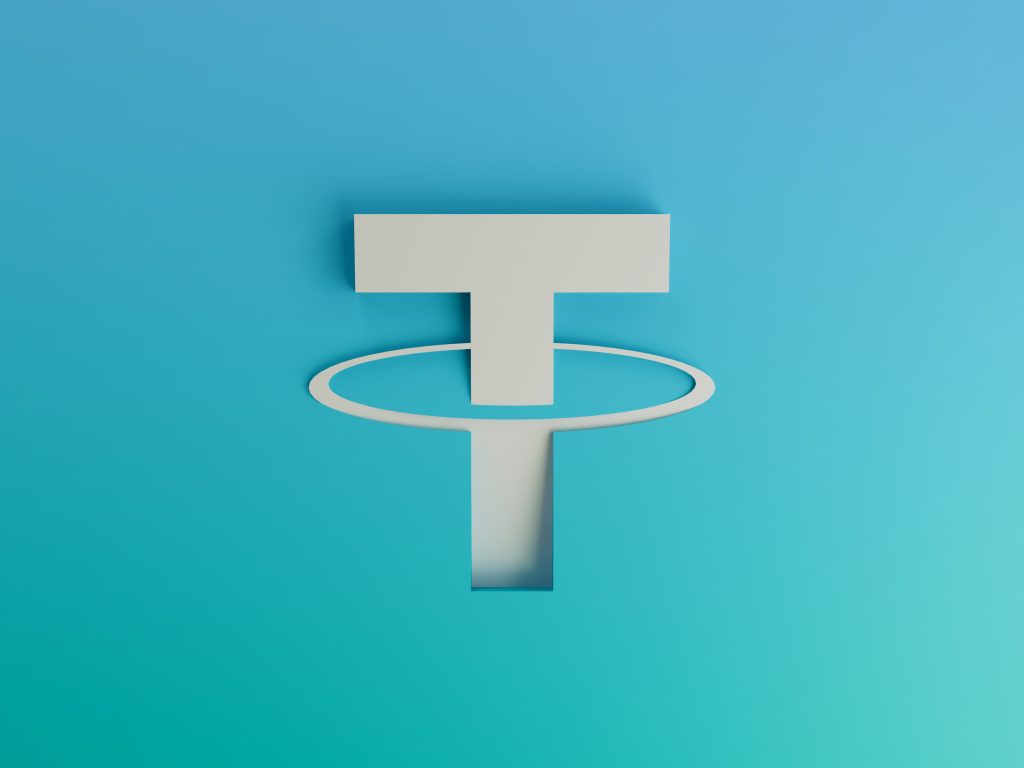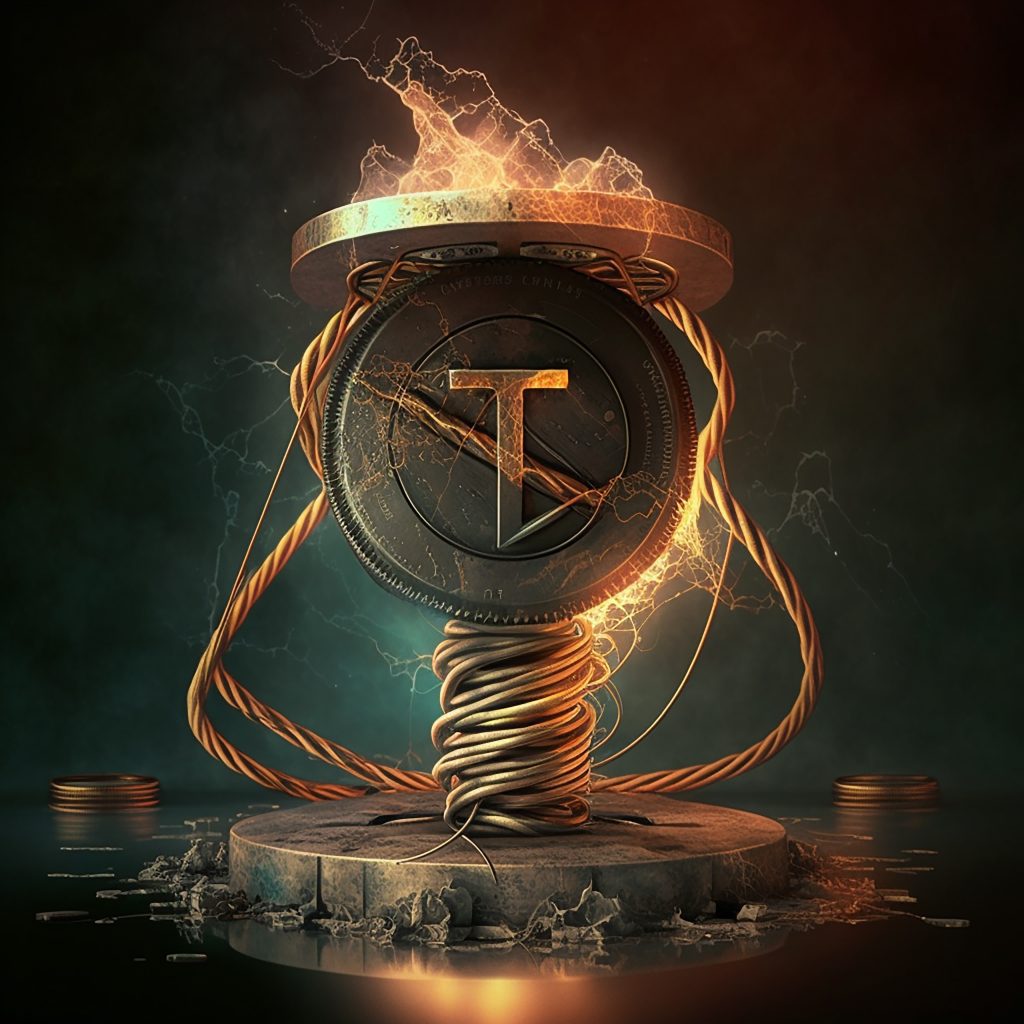Tether (USDT) has gained popularity among cryptocurrency traders and enthusiasts as the largest stablecoin in the market. Its primary purpose is to provide a stable digital asset that shields users from the extreme volatility typically associated with cryptocurrencies like Bitcoin. Developed by Tether Ltd., USDT has emerged as an essential tool for many participants in the crypto market, offering stability and efficiency in day-to-day transactions, trading, and investments.
The Origins of Tether
Tether was first introduced in 2014, initially known as “Realcoin.” However, the company rebranded to Tether shortly after, with the goal of bridging the gap between traditional fiat currencies and the rapidly evolving world of cryptocurrencies. This stablecoin aimed to address the challenges posed by the highly volatile nature of most digital assets, making it a preferred option for those seeking the benefits of cryptocurrencies without exposure to significant market fluctuations.
Understanding Stablecoins and Their Purpose


Stablecoins are digital currencies designed to maintain a stable value by pegging them to an asset, such as a fiat currency or gold. This ensures that stablecoins like Tether have low volatility, making them an attractive choice for those seeking a more predictable crypto asset. They serve various purposes in the crypto market, such as facilitating transactions, providing liquidity, and functioning as a safe haven for investors during turbulent market conditions.
The Importance of Stablecoins in the Crypto Ecosystem
Stablecoins play a vital role in the broader cryptocurrency ecosystem. They provide a practical solution to the challenges associated with the volatility of digital assets, which can limit their utility and adoption for everyday transactions. By offering a more predictable and stable value, stablecoins enable users to reap the benefits of cryptocurrencies while avoiding the risks associated with price fluctuations.
Types of Stablecoins
There are several types of stablecoins, each with its unique pegging mechanism:
- Fiat-backed stablecoins: These stablecoins, like Tether, are pegged to a fiat currency, such as the US Dollar, Euro, or British Pound. They are backed by a reserve of the corresponding fiat currency held by the issuing company.
- Crypto-collateralized stablecoins: These stablecoins are backed by other cryptocurrencies, typically overcollateralized to mitigate the risks associated with the volatility of the collateral.
- Commodity-backed stablecoins: These stablecoins are pegged to the value of a physical asset, such as gold or silver. The issuing company maintains a reserve of the underlying commodity to ensure the stability of the stablecoin.
- Algorithmic stablecoins: These stablecoins are not backed by any collateral but instead rely on algorithms and smart contracts to maintain their value relative to a pegged asset.
Understanding the different types of stablecoins and their purposes is crucial for anyone looking to navigate the world of cryptocurrencies and leverage their unique benefits.
A Closer Look at Tether: How It Works
Tether (USDT) operates as a fiat-backed stablecoin, with each token pegged to an equivalent amount of traditional currency, typically the US Dollar. This pegging ensures that the value of USDT remains stable and in line with its corresponding fiat currency. Let’s delve deeper into how Tether functions and maintains its value stability.
► The 1:1 Pegging Mechanism
Tether Ltd., the company behind USDT, holds a reserve of US Dollars or other fiat currencies, equivalent to the number of USDT tokens in circulation. This reserve ensures that each USDT token can be redeemed for its corresponding fiat currency value, maintaining a stable 1:1 exchange rate between USDT and the US Dollar or other pegged currencies. The company undergoes periodic audits to ensure transparency and demonstrate that its reserves match the circulating USDT supply.
► The Omni Layer and ERC-20 Standards
USDT initially operated on the Bitcoin blockchain using the Omni Layer protocol, a platform for creating and trading custom digital assets. As the cryptocurrency market evolved, Tether expanded its presence on other blockchain platforms such as Ethereum, using the popular ERC-20 token standard. Today, USDT is available on multiple blockchains, including Ethereum, TRON, and Binance Smart Chain, among others, allowing for increased interoperability and accessibility for users.
Tether’s Other Stablecoins


While USDT is the most well-known stablecoin offered by Tether Ltd., the company also provides other stablecoins pegged to different fiat currencies. These additional stablecoins cater to a diverse global audience and provide users with the same stability and utility as USDT but with their preferred local currencies.
- Tether Euro (EURT): Pegged to the Euro, EURT caters to users who prefer transacting in Euros.
- Tether Gold (XAUT): This stablecoin is pegged to the value of gold, with each XAUT token representing one troy ounce of physical gold held in a secure vault.
- Tether CNH (CNHT): Pegged to the offshore Chinese Yuan, CNHT provides an option for users who prefer to transact in the Chinese currency.
The Role of Tether in the Crypto Market
Tether plays a crucial role in the cryptocurrency market by providing stability, liquidity, and a more predictable digital asset for various use cases. Here are some of the ways Tether contributes to the crypto ecosystem:
◇ Facilitating Crypto Transactions
As a stablecoin, USDT serves as an excellent medium of exchange for digital transactions. Users can convert their volatile cryptocurrencies into USDT to facilitate purchases, payments, or remittances without worrying about sudden price fluctuations.
◇ Providing Liquidity in Trading
USDT is widely used as a trading pair on various cryptocurrency exchanges, offering traders an alternative to traditional fiat currency pairs. This helps improve liquidity and allows traders to manage their risk exposure more effectively.
◇ Safe Haven During Market Volatility
In times of market turbulence, investors often seek refuge in stable assets. Tether provides a digital safe haven for those looking to protect their investments from extreme price swings, offering a more predictable and stable value compared to other cryptocurrencies.
Controversies and Trustworthiness of Tether
Despite Tether’s widespread adoption and utility, the stablecoin has faced controversies that have raised concerns about its trustworthiness. Let’s explore some of these issues and their implications for Tether’s reputation.
● Transparency and Audits
One of the primary concerns with Tether is the level of transparency surrounding its fiat reserves. Critics argue that Tether Ltd. has not provided sufficient evidence to prove that it maintains enough reserves to back the USDT tokens in circulation fully. Although the company has undergone some audits, skeptics claim that these audits are not comprehensive or frequent enough to instill confidence.
● Legal Troubles and Settlements
Tether Ltd. and its affiliate, Bitfinex, faced legal action from the New York Attorney General’s office in 2019. The lawsuit alleged that the companies had engaged in fraudulent activities and misrepresented the extent of their fiat reserves. In 2021, Tether settled the lawsuit and agreed to pay an $18.5 million fine. While the settlement did not include an admission of guilt, it raised concerns about Tether’s operations and the stablecoin’s stability.
The Impact of the TerraUSD Meltdown on Tether
The TerraUSD (UST) meltdown was a significant event in the stablecoin industry, causing substantial disruptions and raising questions about the viability of algorithmic stablecoins. While Tether was not directly affected by the TerraUSD meltdown, it did experience indirect consequences.
◦ Renewed Focus on Fiat-Backed Stablecoins
The TerraUSD meltdown highlighted the potential risks associated with algorithmic stablecoins, leading many investors and traders to reconsider the importance of fiat-backed stablecoins like Tether. As a result, the demand for USDT increased as users sought a more reliable and stable alternative to algorithmic stablecoins.
◦ Strengthening Trust in Tether
In the aftermath of the TerraUSD meltdown, Tether’s reputation as a reliable stablecoin was bolstered. The increased demand for USDT demonstrated that, despite the controversies surrounding Tether, it remains a trusted asset for many users in the crypto market. This renewed trust highlights the importance of Tether’s role in providing stability and liquidity within the ecosystem.
Tether vs. Bitcoin: Stability vs. Volatility
When comparing Tether (USDT) and Bitcoin (BTC), it’s essential to understand the fundamental differences between these two types of cryptocurrencies. While both have their respective roles in the crypto ecosystem, they serve distinct purposes and have unique risk profiles. Below is a comparative table that highlights the key differences between Tether and Bitcoin.
| Feature | Tether (USDT) | Bitcoin (BTC) |
|---|---|---|
| Purpose | Stablecoin pegged to the US dollar, providing stability and liquidity | Digital asset and store of value, often referred to as “digital gold” |
| Price Stability | Highly stable due to its 1:1 peg to the US dollar | Highly volatile, with price fluctuations influenced by various factors |
| Use Cases | Trading, transactions, stable store of value during periods of volatility | Investment, transactions, store of value, and speculation |
| Inflation | Inflationary as Tether Ltd. can issue more tokens as needed | Deflationary, with a limited supply of 21 million coins |
| Governance | Centralized, controlled by Tether Ltd. | Decentralized, governed by a global network of nodes |
| Security | Dependent on the trustworthiness of Tether Ltd. and the USD backing | Highly secure due to its decentralized nature and robust cryptographic algorithms |
| Regulatory Scrutiny | Higher, as it is tied to the traditional financial system | Lower, but still subject to regulatory concerns and oversight |
➢ Tether: Stability Through Fiat Pegging
Tether’s primary function is to provide stability in an otherwise volatile market. As a stablecoin pegged to the US dollar, its value remains relatively constant. This stability allows users to hedge against volatility, making it an ideal asset for trading and transacting without the risk of significant price fluctuations.
➢ Bitcoin: A Volatile Digital Asset
Bitcoin, on the other hand, is a highly volatile digital asset. Its value can fluctuate wildly due to various factors, such as market sentiment, regulatory developments, and technological advancements. This volatility can lead to significant gains or losses, making it a riskier investment compared to Tether.
Is Tether a Good Investment?
When considering whether Tether is a good investment, it’s crucial to understand that USDT is not designed to generate significant returns. Instead, its primary purpose is to provide stability and liquidity within the crypto market. As a result, investing in Tether is less about making a profit and more about preserving capital in times of market uncertainty.
That said, Tether can be a valuable tool in a well-balanced crypto portfolio. When used strategically, it can help minimize risk, facilitate seamless transactions, and act as a stable store of value during periods of heightened volatility.
The Future of Tether and Stablecoins
The future of Tether and stablecoins, in general, looks promising, as they continue to play a vital role in the crypto ecosystem. Here are some potential developments and trends that could shape their future:
‣ Regulatory Clarity
Increased regulatory clarity around stablecoins could encourage wider adoption and ensure that these assets continue to serve their intended purpose. It is essential for stablecoin issuers, including Tether Ltd., to work closely with regulators and adhere to best practices to maintain trust and credibility in the market.
‣ Diversification of Stablecoins
As the stablecoin market matures, we can expect to see more diverse offerings, including those pegged to other fiat currencies or even baskets of assets. This diversification could provide additional stability and risk management options for users.
‣ Integration with Decentralized Finance (DeFi)
Tether and other stablecoins are increasingly being integrated into DeFi platforms, providing users with opportunities to earn interest, borrow, and lend using stablecoins. As the DeFi ecosystem continues to grow, stablecoins like Tether are likely to play a more significant role in driving innovation and adoption.









